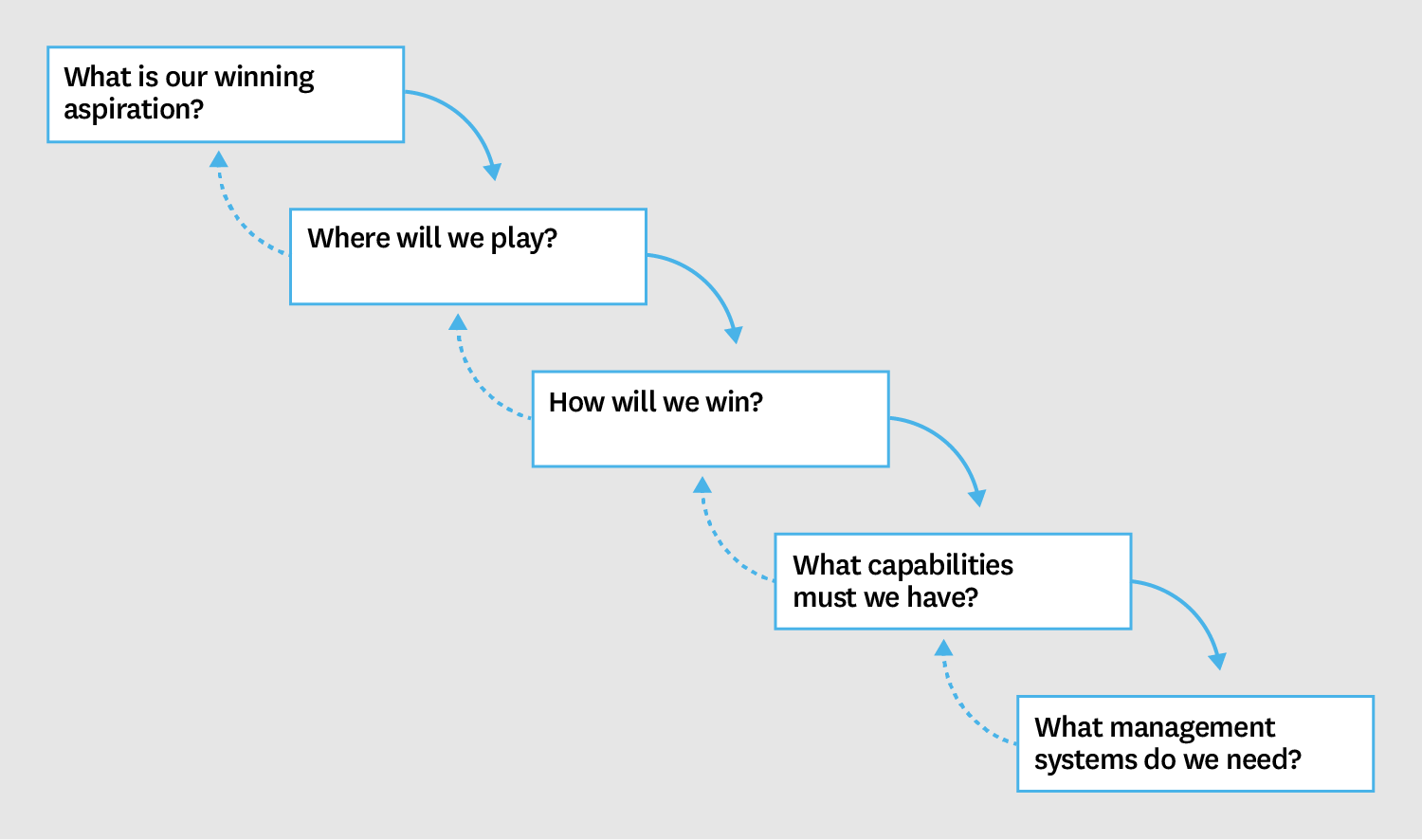When Technology Converges

The Catalysts Domain
Last week’s Letter explored the primacy of imaginative courage at the heart of the Horizons domain of Circudynamics. This Letter covers the next domain: Catalysts.
I’m glad it comes a few days after Mike Newman posted his thoughts on the “robot milkman” thesis that is out there. I share Mike’s perspective on appropriate remedies for some problems he diagnoses: e.g., products fit for purpose that meet the needs of people where they are. It is on his prognosis and remedy where there is some room for debate.
This essay explains some of my thinking about how weird things are going to get with respect to technology in the service of circularity—and why robot milkmen are going to appear comparatively pedestrian in the foreseeable future.
That is because the convergence of mature technologies with emerging ones are set to finally make circular solutions strategically viable at scale.
Companies have already invested in many of the mature systems during their digitization transformation. Their application towards the higher organizing principle of circular transformation is what gives them new life and relevance.
Their convergence with amazing new technologies is more than the usual march of technological progress. It's the inception of a different strategic paradigm—one that releases latent value from the existing as it mixes with unprecedented potential of the new by redirecting them toward circular value creation.
We call this technological force the Catalysts domain of Circudynamics. It is distinct but indivisible from strategy. That is why to understand it, we need to view it through a strategic lens.
The Strategy Choice Cascade Framework

Roger Martin's Strategy Choice Cascade reveals how winning strategies operate across five integrated, simultaneous, and bi-directional levels:
Integrated: Each level must reinforce every other level
Simultaneous: All levels must be considered together, not sequentially
Bi-directional: Insights flow both up and down the cascade
The five levels are:
- Winning Aspiration - What does winning look like?
- Where To Play - In what markets/segments will we compete?
- How To Win - What's our competitive advantage in those spaces?
- Capabilities - What must we be distinctively good at?
- Management Systems - What systems and technologies enable our capabilities?
I haven’t found a better guide for understanding the strategy of circular transformation.
As a technology entrepreneur selling new-to-world systems, I witnessed a recurring pattern in client behavior: organizations would shop the technology before conclusively defining the part it would play across the Strategy Choice Cascade.
Some middle managers felt their job was done when applying their budget to a systems purchase and pushing it up the cascade (and out of their department) as quickly as possible.
In the same way, senior leaders often felt the best boost they could give to (and the quickest win they could get from) their Winning Aspiration would be to acquire an amazing system in support of it.
All checkers. No chess.
The prevalence of this dynamic fits the facts of why circular retrofits consistently fail to scale. They prioritize Management Systems while leaving the upper levels of the cascade for later moves.
True circular transformation requires curating the entire cascade around circular principles.
What We Have Now: The Linear Cascade
Absent the circular transformation imperative, existing technology convergence supports a fundamentally extractive (and reactive) strategic paradigm:
Management Systems (Support Technologies)
- IoT sensors: Monitor production efficiency and asset utilization
- Machine learning: Optimize operations and predict maintenance
- Machine vision: Automate quality control and defect detection
- Distributed ledgers: Track ownership and verify transactions
- Production automation: Reduce labor costs and increase throughput
- Material passports: Document provenance for compliance
- Advanced analytics: Extract insights from customer and operational data
- Advanced materials: Smart, responsive, self-healing, and biodegradable materials
- Edge computing: Real-time processing enabling immediate response and 1:1 interface relationships
Capabilities
- Omnichannel experiences: Reach customers across multiple touchpoints
- Supply chain management: Optimize cost, speed, and reliability
- Customer acquisition: Drive traffic and convert prospects efficiently
- Brand building: Create preference and premium pricing power
How To Win
- Cost reduction: Lean operations, automation, globalization
- Disintermediation: Remove intermediaries to capture their margins
- Scale advantages: Leverage fixed costs across larger volumes
- Network effects: Create switching costs and competitive moats
Where To Play
- Direct-to-consumer channels: Bypass retailers and distributors
- Global markets: Access low-cost production and large customer bases
- High-growth segments: Focus on fast-expanding categories
- Premium niches: Serve customers willing to pay higher margins
Winning Aspiration
Make more money by reducing costs and eliminating competition.
Build defensive moats around proprietary value. Benefits accrue primarily to the producer through margin expansion and market share protection.
Unlocking Hidden Value in Existing Investments
Companies that redirect existing technological investments like these toward circular transformation discover these mature systems support new capabilities, How To Win strategies, and Where To Play options.
When used in concert with emerging systems boasting super intelligence and nearly complete knowledge, existing technologies enable ecosystem coordination they were never designed for.
Also, they contribute genuine value to a new set of ecosystem elements, especially consumers who increasingly value purpose, sustainability, and other benefits like durability and lower ownership costs.
The transformation isn't about rip and replace. Applying mature technologies around the higher organizing principle of circular value creation rather than linear value extraction unleashes a state change in the existing infrastructure.
That’s why prospects like the robot milkman are not so outlandish (even if that form factor itself might not be their likely expression).
The State Change
The technological imperative shift from extraction to circulation gives rise to a fundamental state change in how business operates—like the transition from steam to electricity, or from analog to digital.
During state changes, the same underlying technologies can produce radically different outcomes depending on the strategic framework applied. What matters isn't the technology itself, but how it's integrated into value creation systems.
What Is Coming Soon: The Circular Cascade
To the list of mature technologies above (and others like them), we can add today’s emerging technology convergence enabling a fundamentally different strategic paradigm, one that is circular and proactive:
Management Systems (Enabling Technologies)
- Super intelligence: AI systems that optimize across entire ecosystems, not just individual companies
- Virtually omniscient systems: Real-time visibility into all material flows, stakeholder needs, and environmental impacts
- Robotics: Automated reverse logistics, disassembly, and remanufacturing at scale
- Digital twins: Accessible, actionable models of entire ecosystems and value chains
- Autonomous systems: Self-optimizing circular flows without human intervention
- Regulatory compliance infrastructure: Coverage, oversight, and transparency systems that facilitate accountability for material and energy flows across ecosystems directly and indirectly impacted by producer actions
Capabilities
- Reverse logistics: Seamlessly capture, process, and reintegrate returned materials
- Deep stakeholder relationships: Automate 1:1 connections with customers, suppliers, communities, and ecosystems
- Ecosystem orchestration: Coordinate value creation across multiple participants
- Predictive lifecycle management: Anticipate and prevent waste before it occurs
- Value flow optimization: Maximize benefit distribution across all ecosystem participants
How To Win
- Elevated product-market fit: Solutions that are both performant and mindful of customers' higher-order needs (self-actualization, purpose, connection)
- Integrated functional architecture: Seamless coordination across all organizational domains
- Long-term optimization: Planning cycles that account for full lifecycle impacts and benefits
- Ecosystem value creation: Generate benefits for all participants, not just the producer
Where To Play
Where it makes sense according to How To Win and Winning Aspiration.
Not where markets are largest or costs are lowest, but where circular principles create the most value for all ecosystem participants. This might mean local production, specialized materials, or collaborative consumption models.
Winning Aspiration
Generate and capture value up and down the entire value chain.
This is the fundamental shift. Circular transformation appeals to all ecosystem players because its purpose is to create value flow, not value extraction. Sustainability and enterprise value benefits emerge naturally from this approach.
The WebVan Lesson
To understand why this convergence moment matters, consider the cautionary tale of WebVan during the internet bubble.
WebVan had the right technology—sophisticated logistics, real-time tracking, automated warehouses. Structurally, it looked remarkably similar to what Amazon Prime Delivery accomplishes today, which is a raging success.
The difference wasn't technological capability. WebVan positioned last-mile delivery as an isolated capability, a standalone service competing on convenience and speed. Amazon Prime positioned the same capability as an element in an integrated value chain—part of a comprehensive ecosystem that included content, cloud services, marketplace, and subscription loyalty.
WebVan failed because it optimized individual components. Amazon Prime succeeds because it optimizes its entire system.
In this way, today's circular economy initiatives often resemble WebVan—sophisticated technologies positioned as isolated capabilities rather than integrated ecosystem elements. They fail not because circular principles are wrong, but because they're not embedded in coherent and dynamic Strategy Choice Cascades.
To paraphrase Steve Jobs: they are features, not products.
The companies succeeding with circular transformation—Patagonia, Interface, IKEA—treat circularity not as an add-on capability, but as their fundamental Winning Aspiration that informs every level of their strategic cascade.
The Circular State Change
When producers shift from value extraction to value circulation, they don't just change their business model. They change the fundamental state of their relationship with ecosystems.
In the extraction state, success requires building defensive moats around proprietary value. In the circulation state, success requires creating expanding value pools that benefit all ecosystem participants.
This state change is becoming possible—and profitable—because the convergence of mature and emerging technologies around the higher organizing principle of circular transformation makes ecosystem coordination more efficient than component optimization for the first time in business history.
Imagine a circular last-mile bi-directional logistics system that captures, sorts, and redistributes materials as seamlessly as Amazon Prime delivers products. Such a system would make today's delivery infrastructure look archaic.
The strategic convergence we're experiencing now—applying mature and emerging technologies around circular transformation as a Winning Aspiration—is creating the conditions for that state change.
The question is which companies will recognize and act strategically on the circular opportunities their existing investments—combined with the promise of emerging technologies—have made.
The Catalysts Domain in Action
The Catalysts domain of Circudynamics focuses on recognizing and timing these convergence moments. Not just identifying individual technologies, but understanding when the application of mature technologies around higher organizing principles creates systematic advantages.
Current convergence indicators include:
- Consumer expectations that linear solutions underserve
- Investor capital looking for new ideas about the next big thing
- Technology maturity that makes circular operations profitable using existing investments
- Emerging technology looking for jobs that need to be done
- Supply chain pressures that favor resilient, localized systems
- Regulatory frameworks that call for systemic risk mitigation measures through coverage, oversight, and transparency for material and energy flows
This last point is important: regulations aren't just compliance burdens, but catalysts that enforce accountability infrastructure. Companies that build transparent, trackable circular systems use regulatory requirements as competitive advantages—demonstrating ecosystem responsibility that builds trust with all stakeholders.
Companies that recognize these convergence moments—and curate their Strategy Choice Cascade around circular transformation as their Winning Aspiration—will become the defining brands of the circular economy era.
Those that simply upgrade their Management Systems while maintaining extractive Winning Aspirations will discover that better technology can't solve fundamental strategic misalignment.
So What? Strategic Implications for Leaders
For Business Leaders
The Catalysts domain reveals that circular transformation isn't about acquiring new technologies—it's about applying your existing digital investments around a fundamentally different Winning Aspiration.
Immediate Action: Audit your current Management Systems (IoT, ML, analytics, distributed ledgers) and ask: "How could these enable ecosystem value creation rather than just operational efficiency?" Consider redirecting those mature technologies toward circular principles.
Strategic Advantage: Your competitors are likely treating circular initiatives as isolated capabilities rather than elements in an integrated Strategy Choice Cascade. This creates first-mover advantages for companies that curate their entire cascade around circular transformation.
Risk Mitigation: Regulatory frameworks aren't compliance burdens—they're opportunities to build accountability infrastructure that demonstrates ecosystem responsibility and builds stakeholder trust.
For Innovation Leaders
Technology convergence isn't the story—strategic convergence is. The same digital systems that optimize linear extraction can enable circular coordination when applied around the higher organizing principle of ecosystem value creation.
Framework Application: Use the Strategy Choice Cascade to evaluate circular initiatives. If they only touch Management Systems and Capabilities (bottom two levels), they'll fail to scale. Successful circular transformation touches all five levels, with circular value creation as the Winning Aspiration.
Investment Strategy: Focus innovation resources on ecosystem coordination capabilities rather than individual technology improvements. Opportunities lie in merging mature technologies with emerging ones to create things like circular last-mile bi-directional logistics systems that make today's infrastructure look archaic.
Timing Recognition: Current convergence indicators—consumer purpose expectations, sustainable capital flows, supply chain resilience pressures—create systematic advantages for early adopters who curate complete Strategy Choice Cascades.
For Governance Leaders
The Catalysts domain positions circular transformation as systematic competitive advantage, not sustainability obligation. It draws latent value from existing investments, and provides purpose for new ones.
Board Oversight: Evaluate circular initiatives by their Strategy Choice Cascade integration. Isolated Management System upgrades (the WebVan approach) will fail. Integrated cascade curation (the Amazon Prime approach) will create sustained advantage.
Risk Assessment: Companies maintaining extractive Winning Aspirations while upgrading technologies face strategic misalignment risks. The state change from extraction to circulation requires governance frameworks that support ecosystem value creation.
Performance Metrics: Track value flow across ecosystems, not just internal operational metrics. Circular success requires accountability for material and energy flows that extend beyond traditional enterprise boundaries.
The Practitioner Insights section explores the meta-lessons from developing the Catalysts domain, including how to recognize convergence moments, avoid the "technology shopping" trap, and build circular transformation confidence in skeptical organizations.

Subscribe to continue reading





